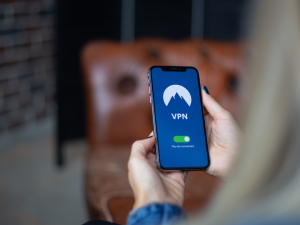Voice over WiFi (VoWiFi)

Course Overview
This workshop provides an in-depth understanding of the technologies and standards that enable the delivery of telephony services over WiFi networks. Participants will gain a comprehensive technical foundation in Voice over WiFi (VoWiFi) architectures and solutions as defined by 3GPP.
The course examines end-to-end procedures and call flows, highlighting the key network components and optimizations necessary to ensure high-quality voice performance and user experience. In addition, it explores WiFi Calling in detail—covering signaling flows, mobility and handover mechanisms, and performance tuning—offering participants a holistic view of packet-based voice services across heterogeneous networks.
Target Audience
This course is designed for professionals involved in the design, deployment, optimization, and management of mobile and WiFi voice services, including:
- Telecom engineers and network planners responsible for VoWiFi and IMS integration
- Core network and radio engineers working on LTE, 5G, or heterogeneous network environments
- VoIP and IMS specialists seeking to extend voice services over WiFi
- Service assurance and performance engineers focused on QoS and user experience optimization
- Technical managers and solution architects overseeing voice and data service evolution strategies
Duration & Training Format
- Classroom: 3 days
- LIVE Virtual: 21 hours
*Note:
- A minimum of 8 or more participants is required for a Classroom session to commence.
- A minimum of 6 or more participants is required for a LIVE Virtual session to commence.
- LIVE Virtual courses can be conducted for 5 hours or 7 hours daily. Please note that the number of training days will be extended if you opt for 5 hours daily.
Upcoming Course Dates
There are no upcoming course dates currently scheduled for this course. If you are keen on attending this course, please register your interest and indicate your preferred training dates via course enquiry form for us to open a Classroom/LIVE Virtual class schedule for this course.
Course Objectives
Upon completion of the course, participants will be able to:
- Describe the network design and infrastructure for WiFi
- Describe the VoWiFi architecture
- Understand and describe the WiFi calling
- Understand the trusted and untrusted non-3GPP access
- Describe the packet core infrastructure needed for VoWiFi
- Describe how IMS is working and is related to delivering Voice
- Describe E2E signalling of SIP
- Describe the security related call-flow of a call
- Understand mobility scenarios (WiFi – EUTRAN, ANDSF, MAPCON, IFOM, NSWO)
- Understand how to engineer WiFi for best possible VoWiFi Quality of Experience
Course Outline
- Voice over WiFi Overview
- VoWiFi Service and its Usage
- WiFi Basics
- Technologies based on IEEE 802.11
- Architecture Overview:
- Trusted WiFi Access in EPC
- Untrusted WiFi Access in EPC
- Network Nodes
- Standardization: LTE <-> WiFi Voice Mobility
- IMS Architecture Overview
- IMS Overview
- SIP Protocol
- IMS Registration and Procedures
- IMS Profile for Voice with WiFi Access (GSMA Defined)
-
VoWiFi Access and Procedures
- VoWiFi Procedures:
- Step-by-step Procedures
- ePDG Discovery
- Introduction to EAP-AKA, IKEv2
- EPS Security
- Case Study
- PDN Connection Setup
- UE IP Address Allocation
- PCSCF Discovery
- IPSec Tunneling
- GTP Tunneling
- Media Streams
- Diameter Messages
-
Voice over WiFi Mobility
- Mobility Scenarios
- LTE <-> WiFi
- WiFi <->
- Role of ANDSF (Access Network Discovery and Selection Function)
-
Packet Core Network Connections
- Hotspot 2.0
- ANDSF
- ISMP (IP Flow Mobility Session Management Protocol)
- ISRP (IP Flow Mobility Seamless Roaming Protocol)
- SIPTO (Selected IP Traffic Offload)
- MAPCON (Multi Access PDN Connectivity)
- NBIFOM (Non-3GPP Interworking Function Offload Mechanism)
-
Voice over WiFi Planning and Optmization
- VoWiFi Auditing and Surveying
- Traffic/Capacity Planning
- QoS and Codec Optimization
- 802.11e Extensions, WMM (Wi-Fi Multimedia)
-
E2E VoWiFi QoE
- UE Capabilities
- VoLTE (Voice over LTE), SRVCC (Single Radio Voice Call Continuity)
- FGI (Feature Group Indicator)
- VoWiFi (EAP-SIM, WMM, HS2.0)
- MOS (Mean Opinion Score) for VoLTE
- Engineering E2E Voice QoE
- Optimization Radio
- Optimization IP Layer
Pre-requisites
- LTE/EPC architecture and operation (e.g., IMS, SIP, and VoLTE concepts)
- IP networking principles, including QoS, routing, and tunnelling
- WiFi fundamentals, such as WLAN architecture, radio access, and authentication mechanisms



